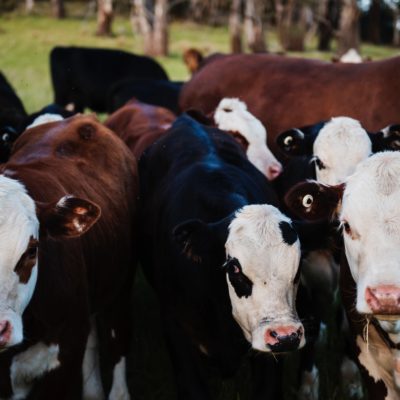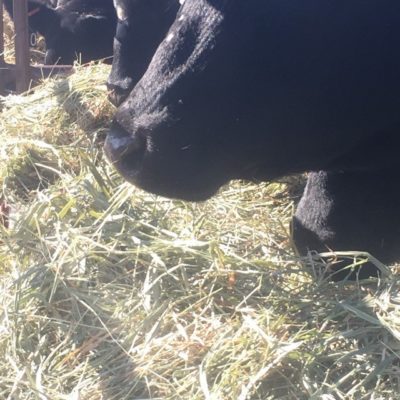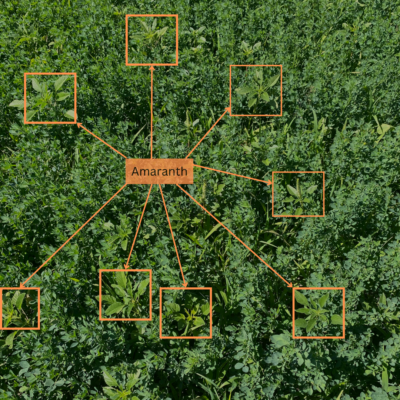As we move closer and closer to winter and some producers still haven’t put their hay up, I have received a growing number of questions about windrow grazing. The typical question I am asked as a feed testing consultant is how sitting in the windrow through the fall and early winter affects the forage quality for grazing in later winter months. Most producers assume that windrowed hay will deteriorate faster than baled hay.
There are two studies that have been conducted to determine how nutritional value changes in hay stored in bales versus windrow grazing. The first,“Reducing Annual Cow Cost by Grazing Windrowed Millet” by Munson et al. was published in The Professional Animal Scientist in 1999. This study took samples of free-standing millet, baled millet and windrowed millet to show differences in Neutral Detergent Fiber (NDF), Acid Detergent Fiber (ADF), and Crude Protein content. Their results showed that there were differences, both fibers were lower in baled forage millet than windrowed millet, but standing millet had the highest fiber content. Recall that the lower the ADF and NDF content of a forage, the higher the Relative Feed Value (RFV). Crude protein was highest in baled millet and lowest in standing millet.
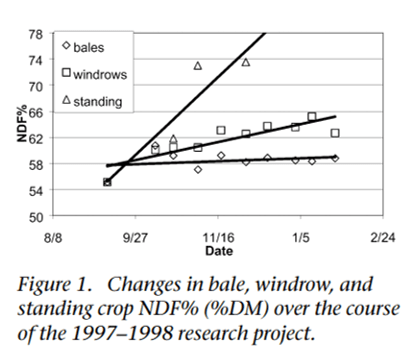
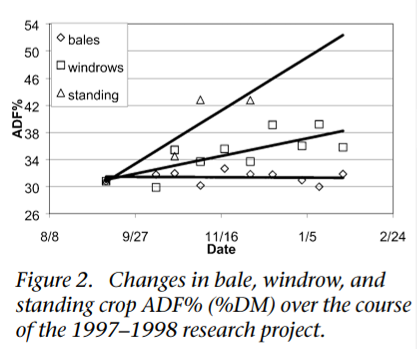

Munson et al. also compared the performance of bred heifers consuming windrow hay versus baled feed. They found no difference in body condition score or body weight between the two groups indicating that feeding baled hay or windrowed hay has little effect on animal performance despite measured fiber and protein forage differences.
The second publication, “Windrow Grazing and Baled-Hay Feeding Strategies for Winter Calves” by Volesky et al. published in 2002 had very similar findings. Volesky et al. reported that crude protein content of windrowed forage was similar to that of baled forage and much higher than standing forage.
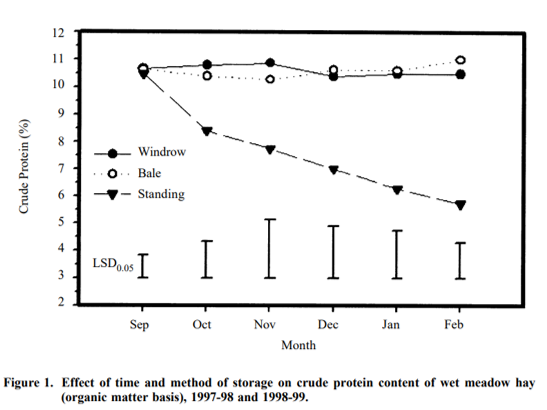
During the trial Volesky et al. also monitored the performance of calves on windrow grazed versus baled feed. They found that during the first year of the trial calves fed windrowed hay gained more weight than those on the baled hay diet. They suggested that these differences may have been due to the consumption of high quality regrowth by the calves on the windrowed feed. This also could explain the performance of heifers in the other study.
These two studies show that grazing windrows does not have the exceptionally negative effect on forage quality that many producers assume. Although, the quality of forage is lower in windrows than bales, animal performance is not affected possibly due to the option to graze high quality regrowth when grazing. Weather you choose to bale and store hay or windrow graze Ward Laboratories, Inc. is here for consultation and testing of forages and supplements. For more information on windrow grazing you can also check out the NebGuide or the Webinar by Aaron Berger at the University of Nebraska.
0
You have 0 items in your cart

